 Fast Results
Fast Results Scores
Scores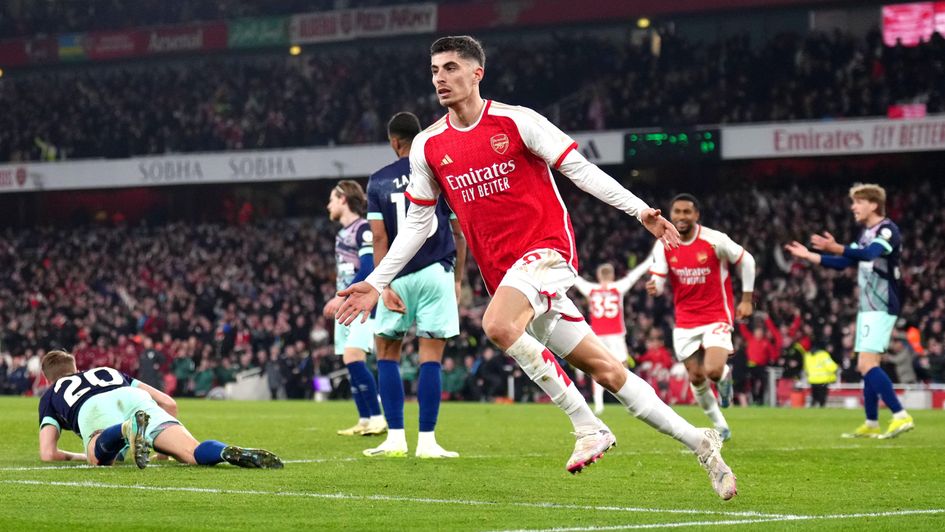
What's behind Arsenal's goalscoring resurgence and can they sustain it?
Arsenal's need of a number nine seems to be a distant memory. The Gunners have found their goalscoring boots once again. In fact, they've been better than ever.
The 4-1 win over Newcastle was their sixth in a row in the Premier League, helping the Gunners keep pace with the title race.
- Written and published prior to Arsenal's 6-0 win over Sheff Utd and 2-1 win over Brentford
It was also the fourth time that Mikel Arteta's side scored at least four, during the last six wins. After hitting a bit of a goal drought before this run of results, the Gunners have found momentum at the right time of the season.
So, what's been behind the goals? Personnel changes? Set pieces? An easy schedule? Let's break it all down.
Better choices up front
After effectively becoming Arsenal's second-choice number nine earlier in the season, Eddie Nketiah is now barely seeing any minutes at all. Kai Havertz and Leandro Trossard are a big reason behind that.
In the past, Arteta has leaned on Gabriel Jesus' ability to unsettle defences with his movement and control in tight-spaces. However, in his absence, the Spaniard has now found more effective solutions in using Havertz as a target man and the Belgian as a false nine.
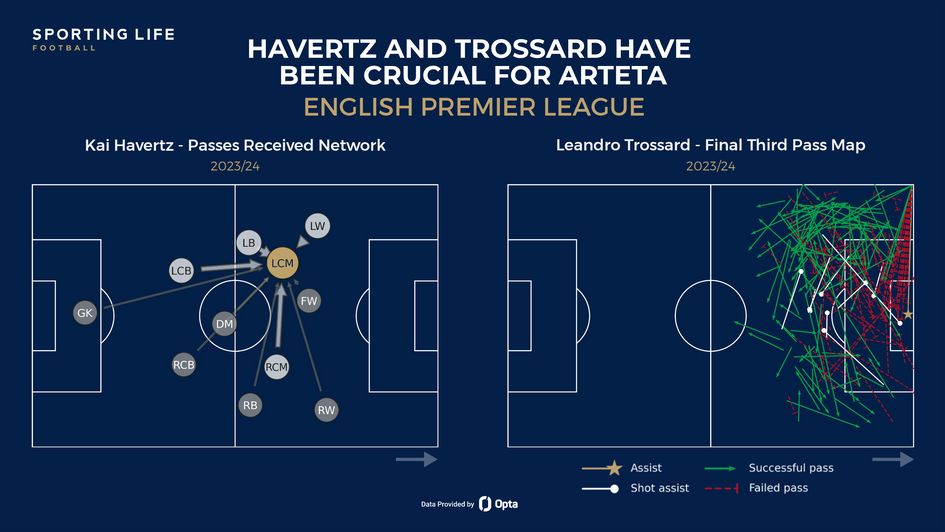
Against different opponents, both of their qualities have shone to Arsenal's benefit. Against West Ham in the 6-0 win for example, Trossard dropping off from the front line allowed Martinelli and Saka to pin the West Ham backline closer to their own penalty area.
This gave the latter the space to turn and attack the box, slotting past Alphonse Areola in goal.
Saka makes it five, Rice makes it SIX...
— Sky Sports Premier League (@SkySportsPL) February 11, 2024
How many goals are Arsenal going to score here?! 😳 pic.twitter.com/LjBoBto7g3
Arteta reflected on including the duo in the line-up against the Hammers, and said, "It’s something very different."
"The way I had the game in my head, and the spaces that they leave, I thought Leo with Kai in those positions could hurt them the most."
Havertz himself played a hand in both the set-piece goals that Arsenal scored, it's a trend that has emerged this term with the German's positioning in the box for those goals.
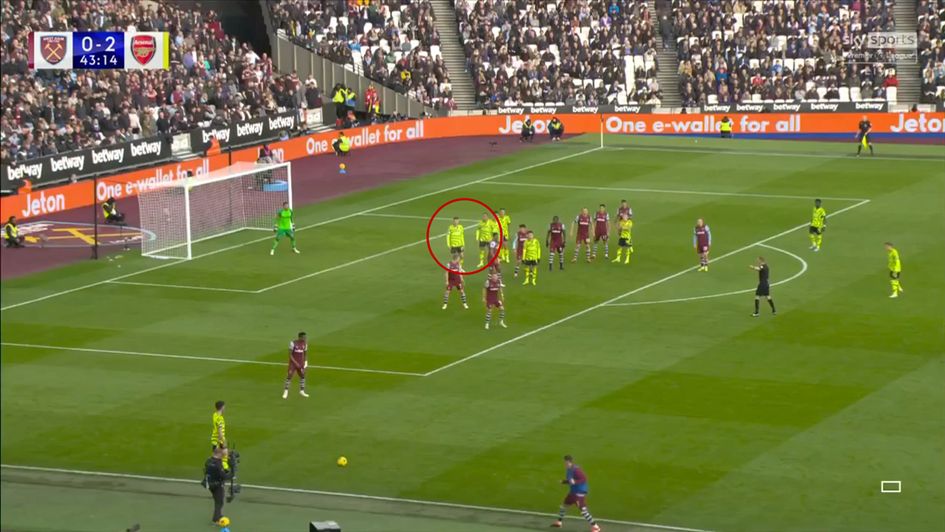
An inswinger from Declan Rice here finds the head of Gabriel with perfection, but a key point to take away is Havertz's positioning here, which creates the space for his Brazilian counter-part to bury a fine header.
Against Liverpool in the 3-1 win, he led the line with Trossard starting on the bench. The approach was clear in that game from the Gunners, to use Havertz as an aerial outlet up against Ibrahima Konate, keeping the Frenchman busy.
The German international recorded a season-high 10 aerial duels lost, pointing to the approach Arteta had to this game.
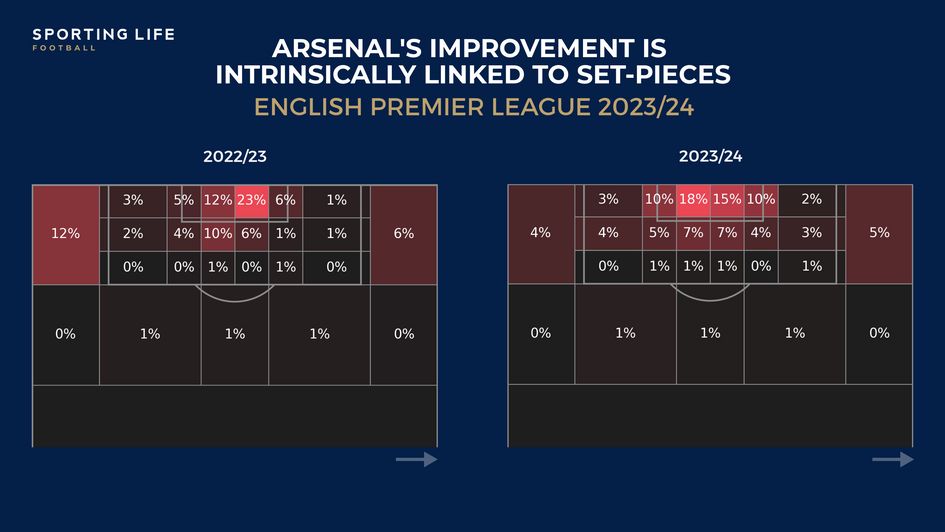
Arsenal have scored a league-high 18 goals from set-pieces this season, averaging around 0.45 Expected Goals (xG) per90 from set pieces, the best figure in the division alongside Everton.
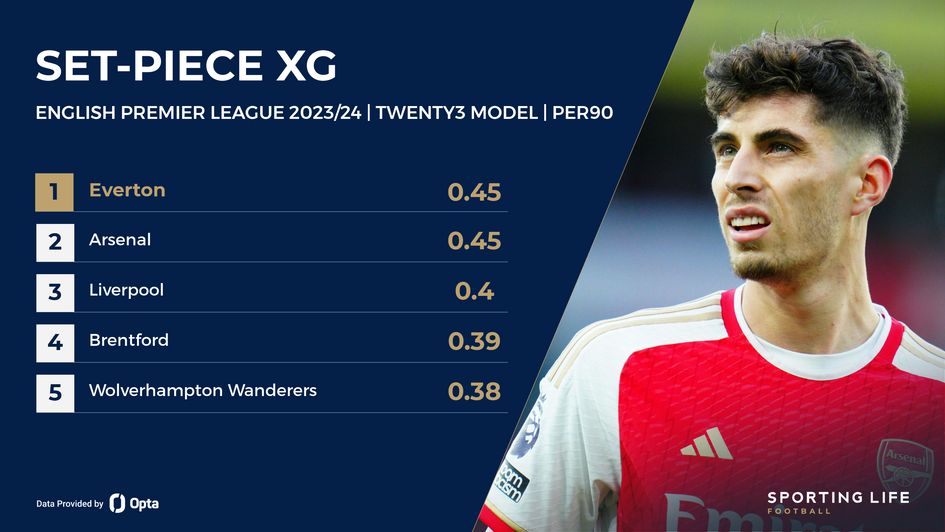
Competition at the elite level is all about managing the marginal gains and this season, it seems as though Arteta has found an edge in set-pieces for his team this season, benefitting from the physicality of his personnel.
Brazilian centre back Gabriel has been the biggest beneficiary of this focus from set-pieces, scoring four so far this term. He is almost always a target from set-piece situations.
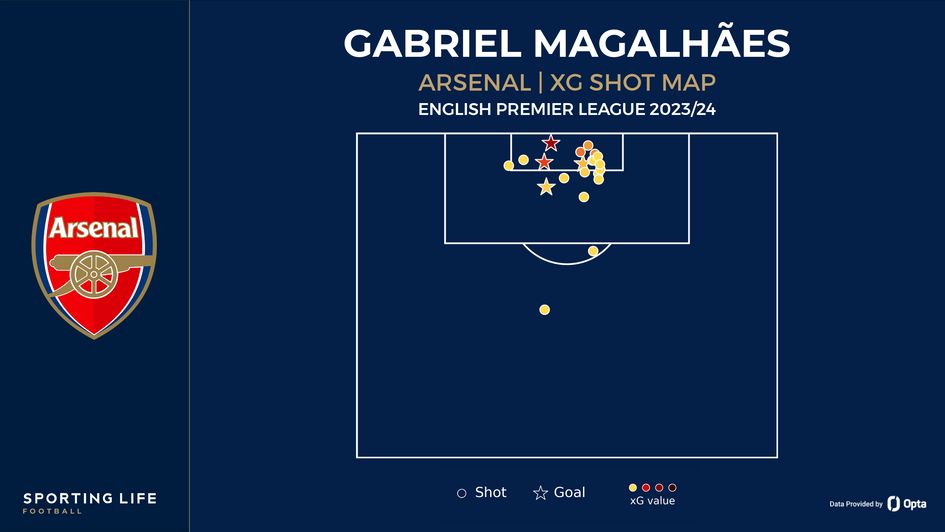
King Ødegaard
Club captain Martin Ødegaard has really stepped it up a notch this year and it is becoming increasingly clear that this is his midfield. He is the star. The one that everything goes through.
Arteta's attempts at integrating Rice as a single pivot earlier in the season exposed some gaps of the England international that were also evident in his time with the Hammers. He does not fare well under pressure.
The solution? Asking Ødegaard to drop deeper and see more of the ball, which has worked extremely well for the team.
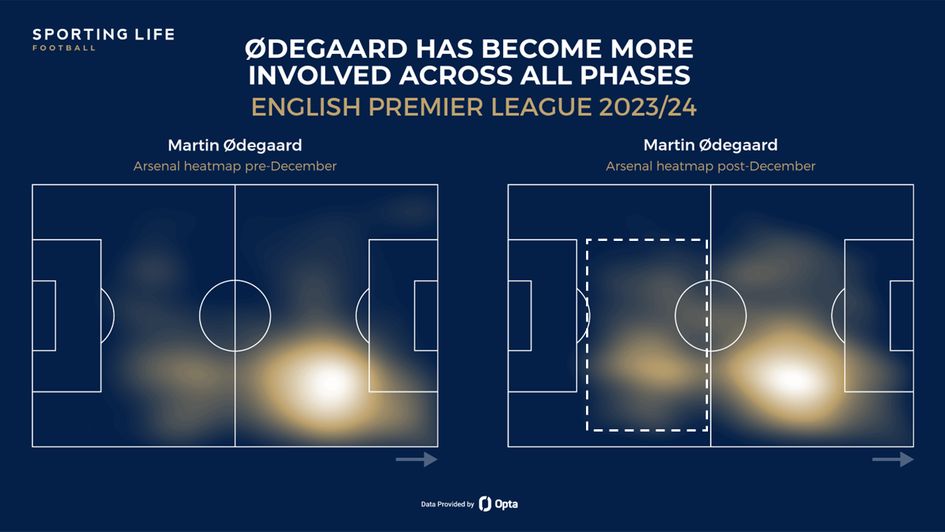
The Norwegian has been the cement between each phase for the Gunners at times, putting himself in positions where most midfielders would not be confident receiving the ball. Clear example of this against Gary O'Neil's Wolves in a 2-1 win for the Gunners.
Arsenal are circulating the ball deep around the back with Wolves attackers engaging high up the pitch, making it difficult for them to play out.
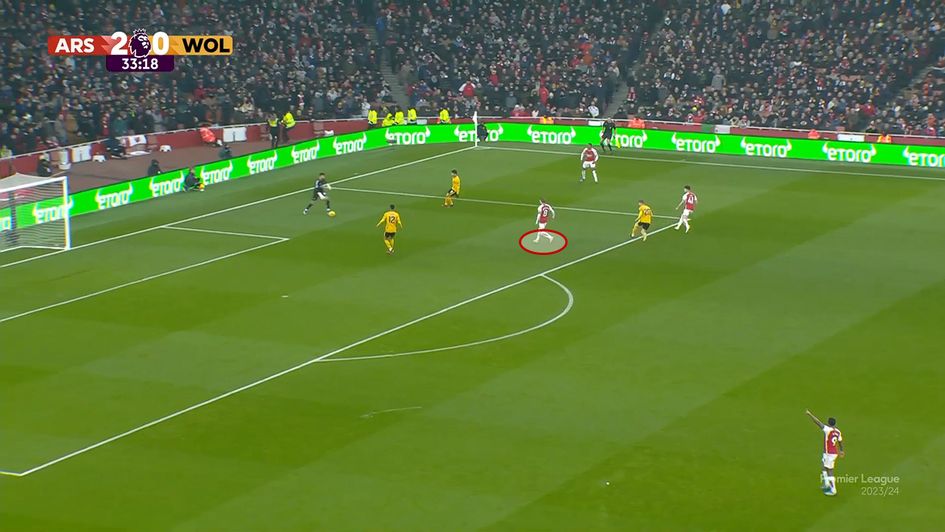
In steps Ødegaard, receiving on his left and then turning out of pressure on his weaker side to help neutralise a potentially dangerous situation.
That game saw Ødegaard register a then season-high 98 touches of the ball. In fact, before the start of December, the Norwegian was averaging about 56.1 touches per90 in the Premier League.
Since the start of December, that figure has shot up to 76.15, Arteta has seen the benefits of allowing the Norwegian to see more of the ball. There are also the advantages that he brings off the ball with his engine for pressing.
Arsenal are now undoubtedly the best side in the division out of possession, their first half against Newcastle most recently was strong evidence of that. Ødegaard is a big part of that incessant pressing unit.
How much space does each team allow? Premier League 2023/24
— StatsBomb (@StatsBomb) September 27, 2023
An early look at how much space is available to the opponent when they receive a pass in each zone pic.twitter.com/49iDZCe2Xf
One more important to note is how influential Jorginho has been to Arsenal's need for control in games. The Italian has not started many games, but whenever he has, he has been exceptional. His presence in midfield allows the likes of Rice and Ødegaard to push and play as true eights in Arteta's three-man midfield.
It was his absence against Porto that was a huge miss for the Gunners, amongst below-par performances from the star cast of players. A need for caution in the away European tie was let down by personnel selection in the end.
Arteta needs to pick and choose his battles in this second half of the season though; he needs his best performers fresh and ready to deliver when it counts.
Is this hot-streak sustainable?

That is the ultimate question but the signs at the moment are that it is likely.
In the three fixtures preceding this six-match winning run, Arsenal averaged around 1.6 xGF, an admittedly small sample size. That figure jumps to 2.71 xGF per90, underlining the sizable improvement in the underlying figures, as a result of their effectiveness from set-pieces as well as open-play.
An average of 4.16 goals scored across this spell is a superb return as well, the Gunners are league-leaders for goals scored at the moment, ahead of their rivals in Liverpool and Manchester City even.
Fixtures against relegation-threatened Sheffield United and Brentford follow for Arteta's men in the Premier League calendar, with the crunch clash being a trip to the Etihad at the end of March. Win that, and the tide could well turn in their favour.
Arteta has silenced all the noise surrounding them needing a number nine, they are the best defensive unit in the Premier League, and now they've mastered set-pieces too.
Time for them to take the final step, come May.
More from Sporting Life
- Fixtures, results and live scores
- Expert xG analysis and features
- Transfer news and done deals
- Football and other sports tips
- Download our free iOS and Android app
- Podcasts and video content
Safer gambling
We are committed in our support of safer gambling. Recommended bets are advised to over-18s and we strongly encourage readers to wager only what they can afford to lose.
If you are concerned about your gambling, please call the National Gambling Helpline / GamCare on 0808 8020 133.
Further support and information can be found at begambleaware.org and gamblingtherapy.org.